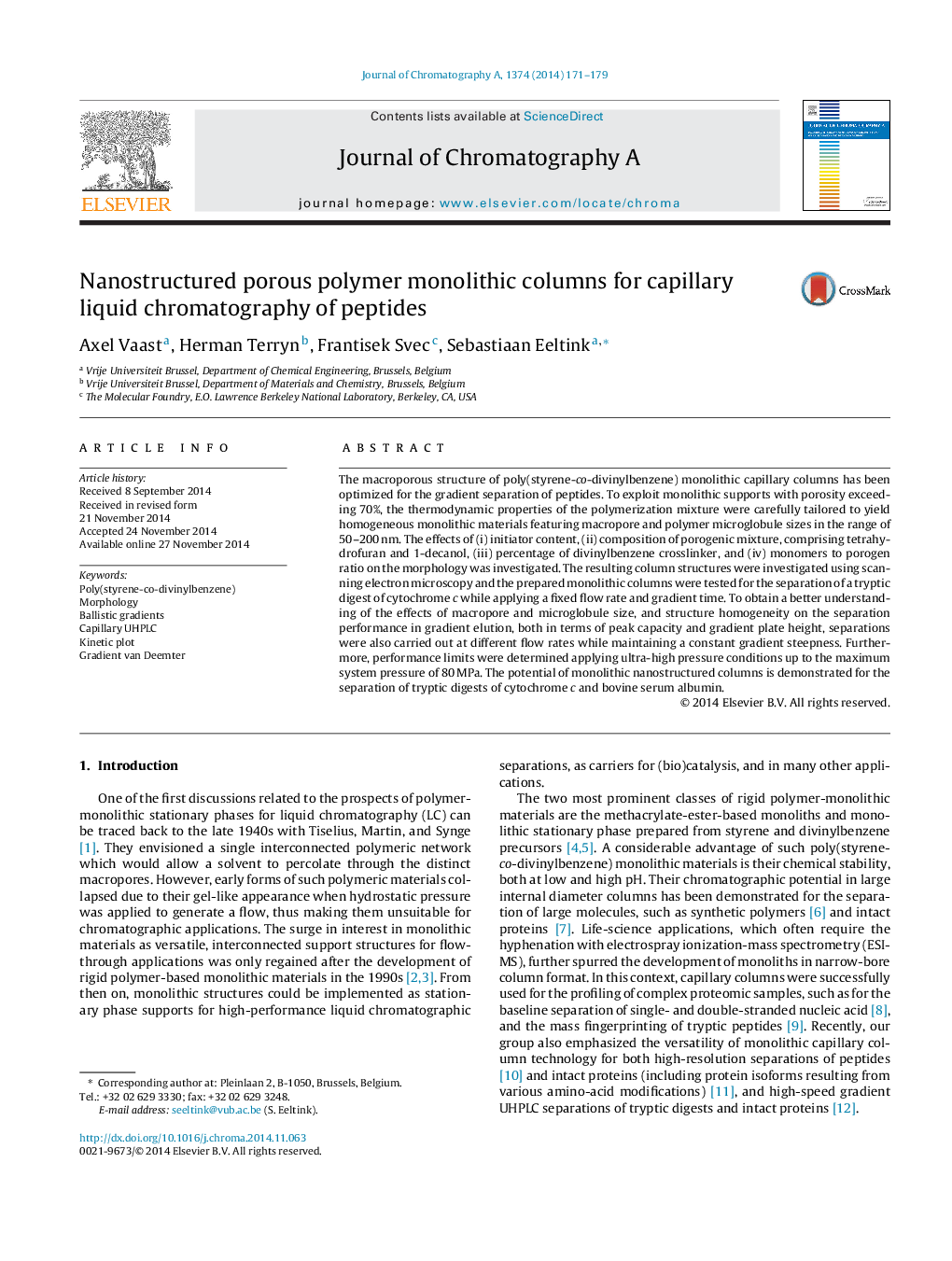| Article ID | Journal | Published Year | Pages | File Type |
|---|---|---|---|---|
| 1199496 | Journal of Chromatography A | 2014 | 9 Pages |
•Poly(styrene-co-divinylbenzene) nanostructured monoliths were developed.•Effects of the different constituents of the polymerization mixture were investigated.•High-porosity monoliths were prepared and characterized for peptide separations.•Short capillary columns were used for ballistic gradients of biomolecules (<1 min).•Baseline separation of a five peptide mixture was achieved within 15 s.
The macroporous structure of poly(styrene-co-divinylbenzene) monolithic capillary columns has been optimized for the gradient separation of peptides. To exploit monolithic supports with porosity exceeding 70%, the thermodynamic properties of the polymerization mixture were carefully tailored to yield homogeneous monolithic materials featuring macropore and polymer microglobule sizes in the range of 50–200 nm. The effects of (i) initiator content, (ii) composition of porogenic mixture, comprising tetrahydrofuran and 1-decanol, (iii) percentage of divinylbenzene crosslinker, and (iv) monomers to porogen ratio on the morphology was investigated. The resulting column structures were investigated using scanning electron microscopy and the prepared monolithic columns were tested for the separation of a tryptic digest of cytochrome c while applying a fixed flow rate and gradient time. To obtain a better understanding of the effects of macropore and microglobule size, and structure homogeneity on the separation performance in gradient elution, both in terms of peak capacity and gradient plate height, separations were also carried out at different flow rates while maintaining a constant gradient steepness. Furthermore, performance limits were determined applying ultra-high pressure conditions up to the maximum system pressure of 80 MPa. The potential of monolithic nanostructured columns is demonstrated for the separation of tryptic digests of cytochrome c and bovine serum albumin.
